
Category: Cooperative Extension
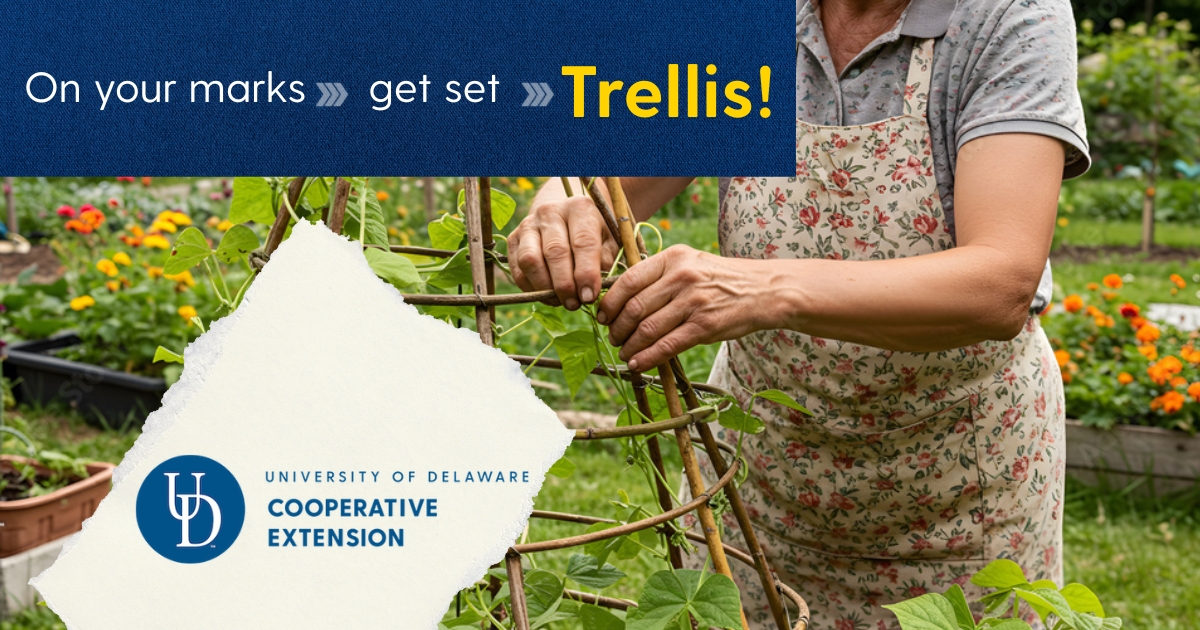
On your marks, get set, Trellis!
May 12, 2025 Written by: Lyndsie Mikkelsen -Fruit and Vegetable Extension Agent, Reviewed by: Emmalea Ernest – Fruit and Vegetable Specialist
Pole lima beans are a local staple for any Delawarean. If you want to get in on the action, now is the time to get your trellises ready (Delaware residency not required)! Pole limas have a long growing season, making it important to get them planted between mid-May and early June. A few popular varieties to grow include Dr. Martin, King of the Garden, Big Mama, and Christmas Lima. Keep in mind some of these varieties can grow 16-20 feet vines, which is why it is important to have trellising in place.
Trellises are essential structures for any vining or climbing crop. Trellises provide support for vertical growth, allowing more sunlight to reach the plant, optimizing air circulation, thereby promoting plant growth and health. Trellises also provide support for the vines, which act like hooks, to attach and climb on. Once plants are tall enough to reach the base of the trellis, you will need to train the vines to attach to the structure, but then, the vines will naturally twist around the provided support to continue their climb.
There are many ways to set up trellis systems, whether permanent or seasonal. Consider your goals and resources when deciding what would work best for your farm or home garden. The main points to keep in mind when designing your trellis system are that it must be able to withstand weight and tension. Some pole lima bean varieties, like Dr. Martin, need to be planted at a 5-foot spacing, while other varieties need to be planted at least 4 feet apart, which may be limiting to your space. Weather should also be a factor, while the trellis teepees are an easy option, you could find yourself playing 52 pole bean pick-up after a summer storm with high wind speeds.
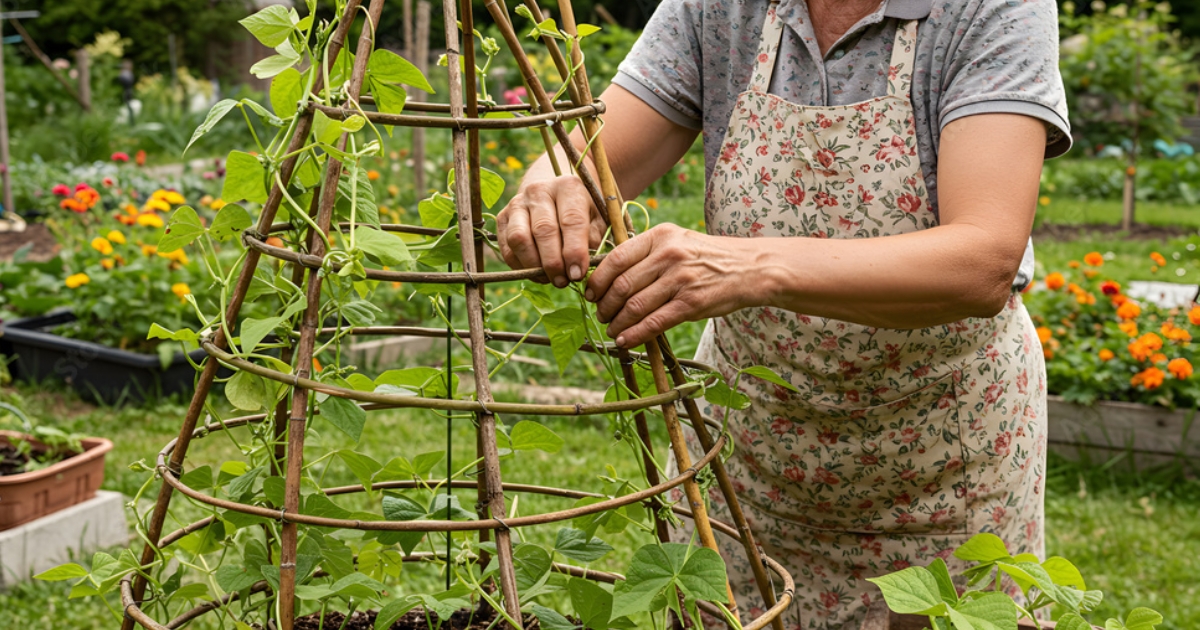
Here on the Carvel Research Farm in Georgetown DE, we have a permanent trellis system installed over 10 years ago. While the upfront cost may not be as cheap as the other options, as you can see over the years it has aged well. This system has a permanent top and bottom wire and binder twine for the plants to climb is installed each year.
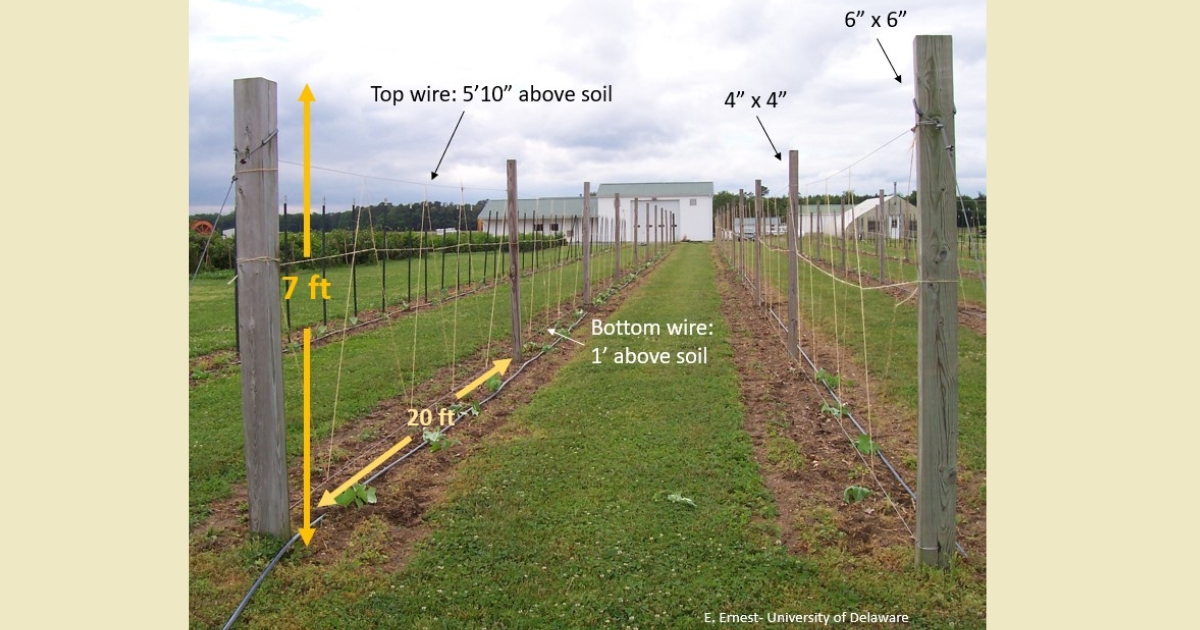
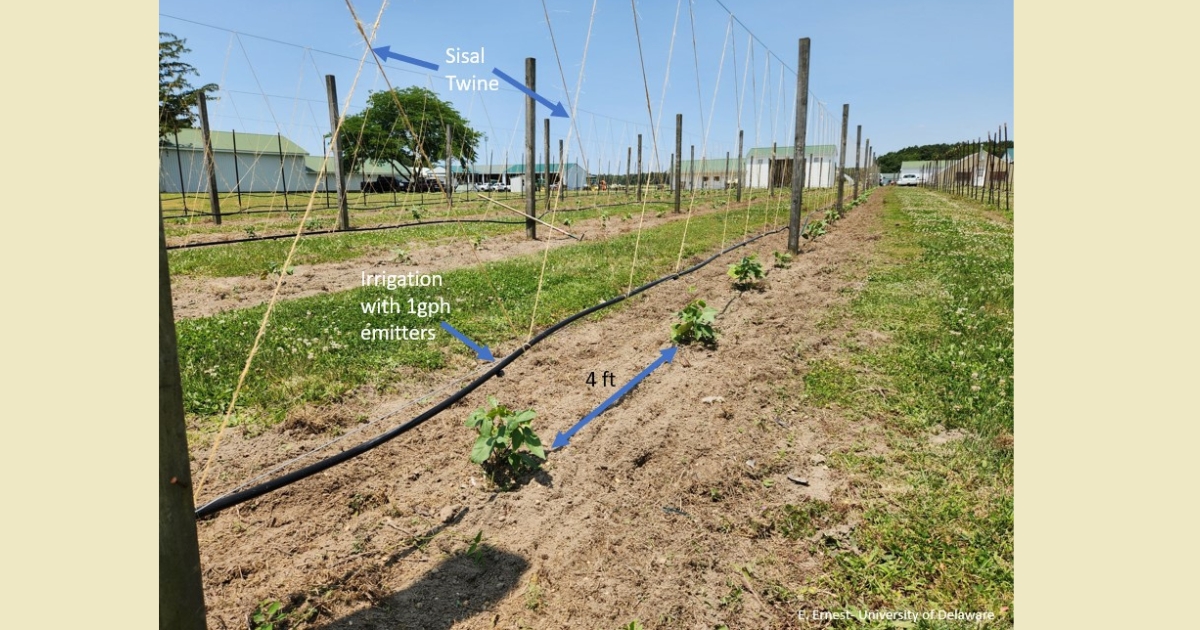
While not everyone has the space or budget for the permanent structure shown, there are other options such as using 8ft T posts to create trellis systems. T posts allow for either temporary or permanent set-ups, and can be used with twine, trellis netting, or even 6in fence insulators. Fence Insulators are a quick and cheap way to create anchor points for pole beans as they climb, with various ways to arrange them. T posts should not be used on their own as a trellis since the vine of the plant often struggle latching onto the pole, this is why its important to provide anchor points.
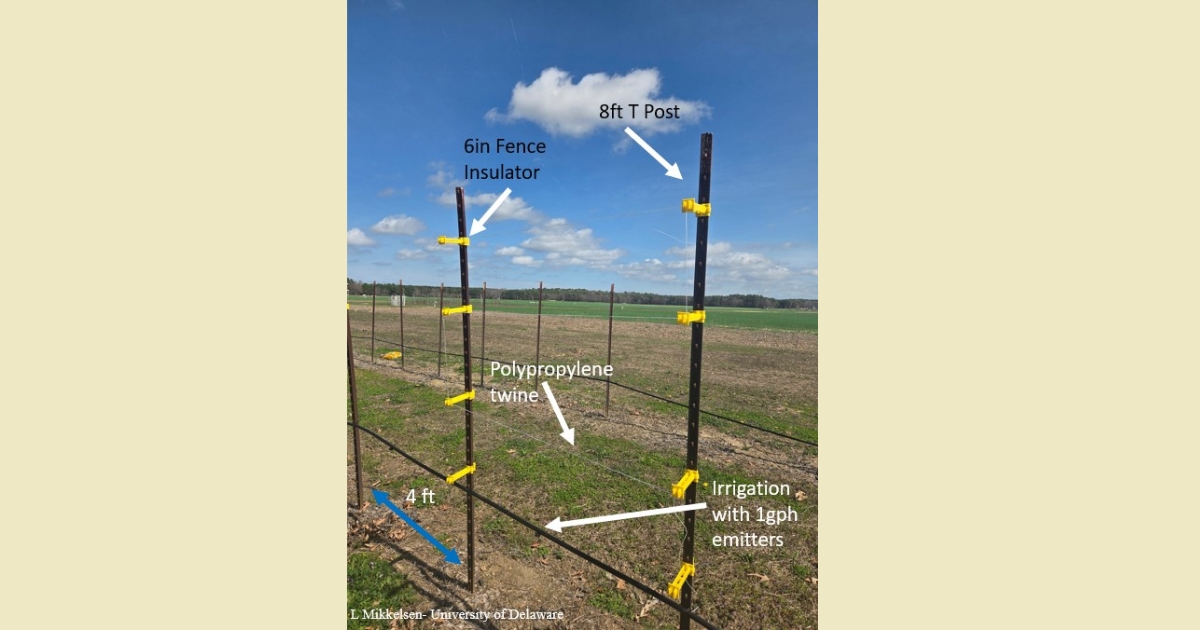
As with everything farming and garden related, weeds are always a concern. It is possible to design systems to allow for plastic mulch to be laid down prior to setting posts. Laying plastic mulch can be an easy solution for seasonal trellis structures. Here is an example using plastic mulch in a temporary trellis setting; this system uses posts and plastic trellis netting.
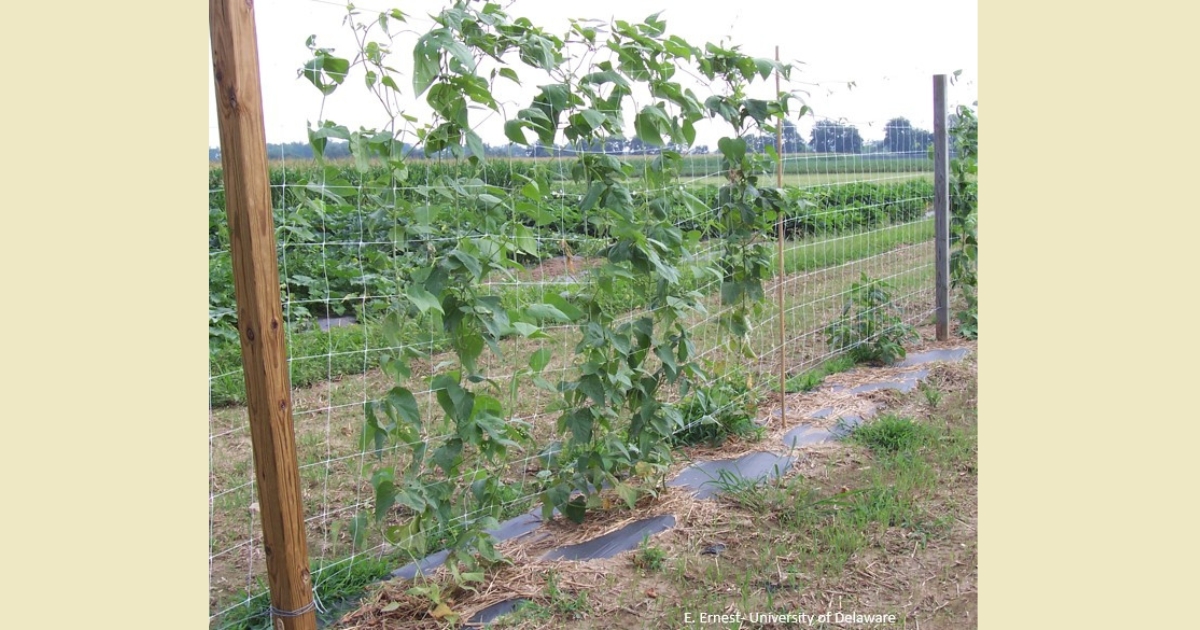
While the main crop for this article is centered around pole limas, trellis systems can be used for a wide variety of vine crops including peas, cucumbers, and squash. For larger-fruited crops you can use a heavier mesh or netting such as cattle pen or chicken wire. The use of binder twine or trellis netting allows for much easier clean-up in the fall, limiting the risk of plant disease for the following year. Also consider for these higher vigor plants the strength of stakes needed and how deeply to set them in the ground.
These are just a few examples given for trellis systems, a quick internet search can bring up dozens of ideas and different materials for trellising. The main points to remember are setting up your trellis to be able to withstand the weight and tension of your crop and, what works best for you and your farm or home garden. For more information on setting up permanent trellising systems keep an eye out for new and updated factsheets on the University of Delaware Cooperative Extension website!
